Map Skills Teaching Resources
Everything you need for teaching map skills in your classroom has been brought together in one place by the Teach Starter team! Find printable map skills worksheets, teaching resources about cardinal directions, longitude and latitude activities and more — all created by teachers for your primary classroom!
Each curriculum-aligned teaching resource has been rigorously reviewed by our teacher team to ensure it meets standards, has been fact- and spell-checked, and is ready to be downloaded and used in your maths and geography lessons!
New to teaching this part of the curriculum? Read on for a primer from our teacher team!
What Are Map Skills?
Map skills can be described rather simply as what students need to know in order to read a physical map. However, this crucial skill goes far beyond that.
At the primary school level, students should be learning to identify the following elements of a map:
- Cardinal directions: North, South, East, West.
- Symbols: Icons or pictures on a map representing different features such as parks, schools, hospitals, airports, etc.
- Legend: A key that explains what each symbol or colour on a map represents.
- Scale: The relationship between the distance on a map and the distance in the real world.
- Landforms: Different types of landforms, such as mountains, hills, valleys, and rivers.
- Oceans, seas, and major bodies of water
- Continents: The seven continents of the world and their general location on the map.
- Hemispheres: The four hemispheres of the earth: northern, southern, eastern, and western.
- Latitude and Longitude: The grid lines that are used to locate places on the map using coordinates.
- Borders: The lines that separate countries, states, and territories on the map.
Why Are Map Skills So Important?
It may not feel like a pertinent skill for students in our GPS era, but the skills involved in reading a map are just as important today as they've ever been!
These maths and geography lessons will help your students develop their spatial thinking, learning to take in and interpret data. With a map, students get visual data that they can then put to use — calculating the distance between two points, for example, or determining where a river flows to better understand why a road cannot extend in that direction.
Map skills also help students better understand symbols and their relationships to pictures, objects, and distance as students get acquainted with the various map elements, such as a compass rose and scale.
To help aid your class in developing the map skills they need to meet Australian Curriculum standards this school year, our team has created both digital and printable resources with activities and worksheets ranging from the early years to upper years!
- Plus Plan

Compass Directions Worksheet
A worksheet to use when exploring grids, grid references and direction.
- Plus Plan

Map Skills Teaching Presentation
Teach basic map skills to younger students with this visually appealing and age-appropriate teaching presentation.
- Plus Plan

Community Giant Colouring Page and Map Skills Worksheet
An activity to practise map skills using a giant map of a community.
- Plus Plan

Reading a Map Grid Worksheet
Develop your students' map skills with a coordinate grid worksheet.
- Plus Plan

Using Cardinal Directions – Worksheet
A worksheet to practise using cardinal directions.
- Plus Plan

A Map of Our School - Mapmaking Project
Develop map skills with a school map-making project.
- Plus Plan

Create Your Own Map - Worksheet
Create simple maps of familiar places with this set of map templates and accompanying comprehension questions.
- Plus Plan
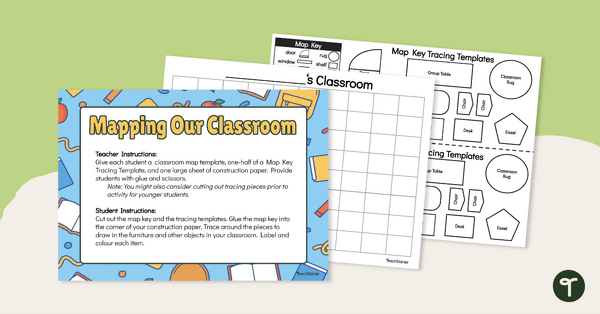
A Map of Our Classroom - Mapmaking Project
Develop primary mapping skills with a classroom mapping project.
- Free Plan

Compass Points Worksheet
A worksheet showing the 8 major compass points.
- Plus Plan

Features of Maps - Exit Tickets
Assess student map and globe skills with twenty exit ticket worksheets.
- Plus Plan

Feature of Maps - Task Cards
Explore the features of maps and globes with a set of multiple-choice task cards.
- Free Plan
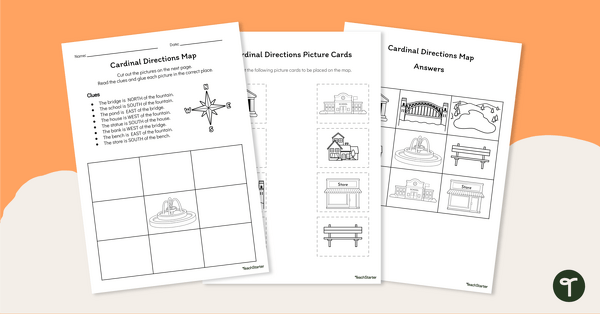
Cardinal Directions - Cut and Paste Worksheet
Use cardinal directions to create a simple town map with this 2-page cut-and-paste activity sheet.
- Plus Plan

Leisure Land - Map Skills Worksheet
Explore map skills with a theme park compass rose activity for Years 2–3.
- Plus Plan

Treasure Island - Mapping Skills Worksheet
Put mapping skills into practice by creating a map of a treasure island!
- Plus Plan

People, Places and Connections (Far) - Teaching Presentation
Explore your students’ connections with distant people and places with this comprehensive 20-slide editable teaching presentation.
- Plus Plan

People, Places and Connections (Near) - Teaching Presentation
Explore your students’ connections with local people and places with this comprehensive 25-slide editable teaching presentation.
- Plus Plan
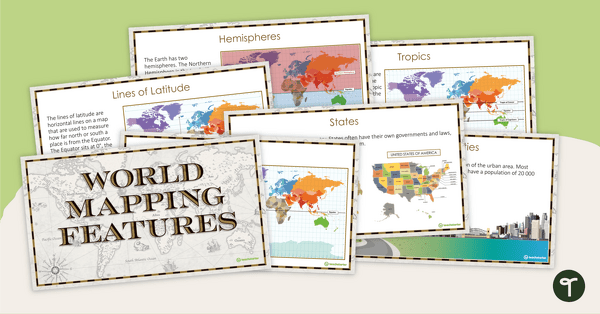
World Mapping Features – Teaching Presentation
Explore the key map features of world maps with this 18-slide PowerPoint presentation.
- Plus Plan

Acclimatised Civilisations: Greece – Workbook
Learn about the physical and human geography of Greece and the Mediterranean region with this inquiry-based mapping activity.
- Free Plan

Acclimatised Civilisations: Australia – Workbook
Learn about the physical and human geography of the continent of Australia with this inquiry-based mapping activity.
- Plus Plan

Features of Maps - Teaching Presentation
Explore the most common features of maps with this engaging teaching presentation.
- Plus Plan

Reading a Map Worksheet
Develop map skills with a map-reading worksheet.
- Plus Plan
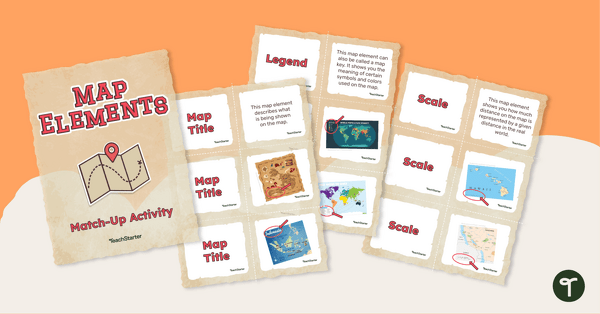
Elements of a Map Match-up Activity
Use knowledge of the features of a map with this map element matching game.
- Plus Plan
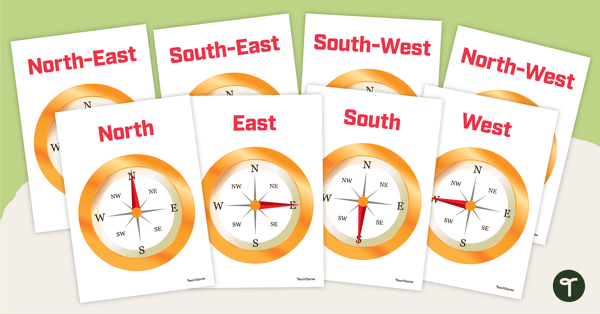
Cardinal and Intermediate Directions - Poster Pack
Display these cardinal and intermediate directions posters when exploring the compass rose with your students.
- Plus Plan

Cardinal and Intermediate Directions Poster
Display this cardinal and intermediate directions poster when exploring the compass rose with your students.